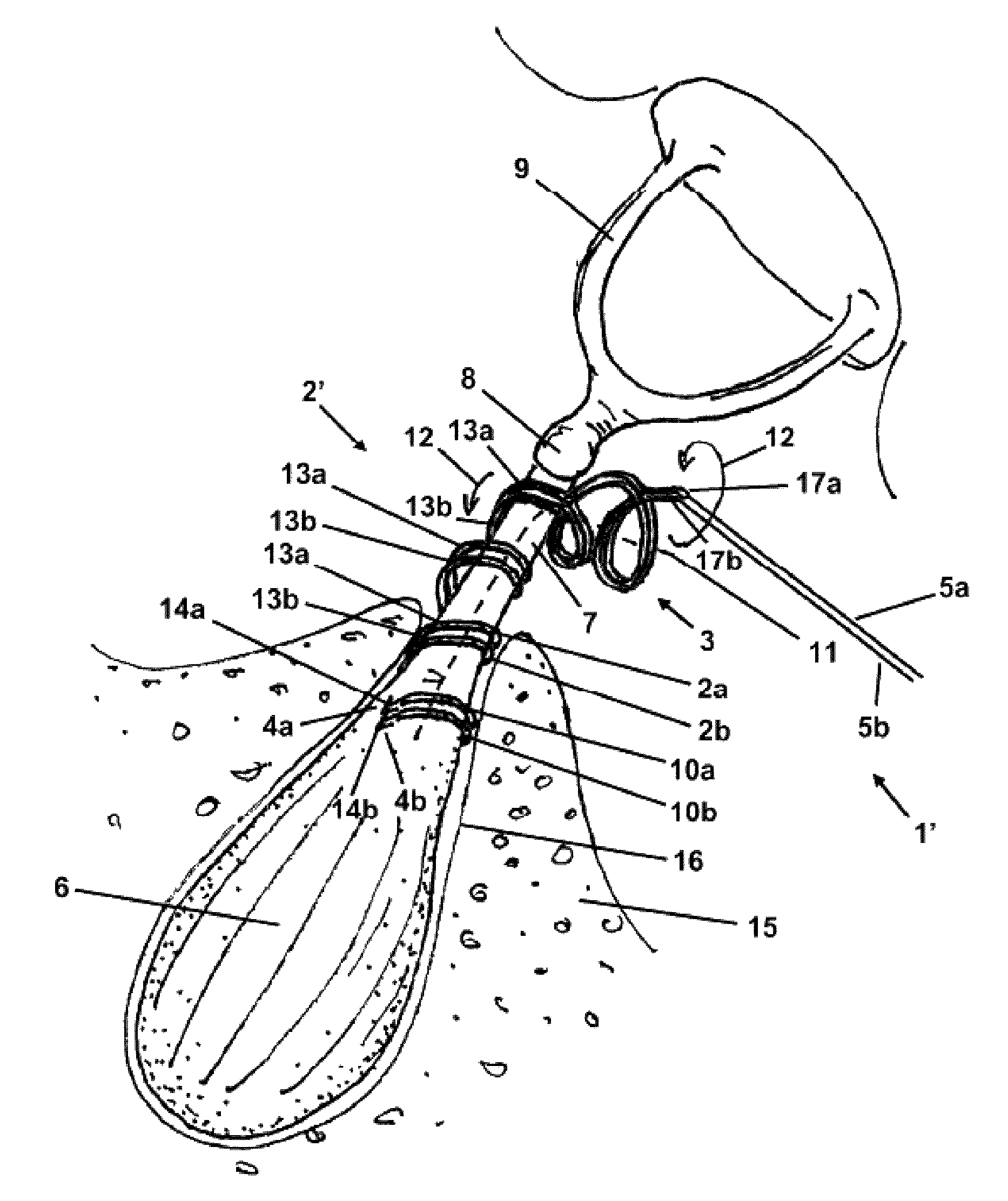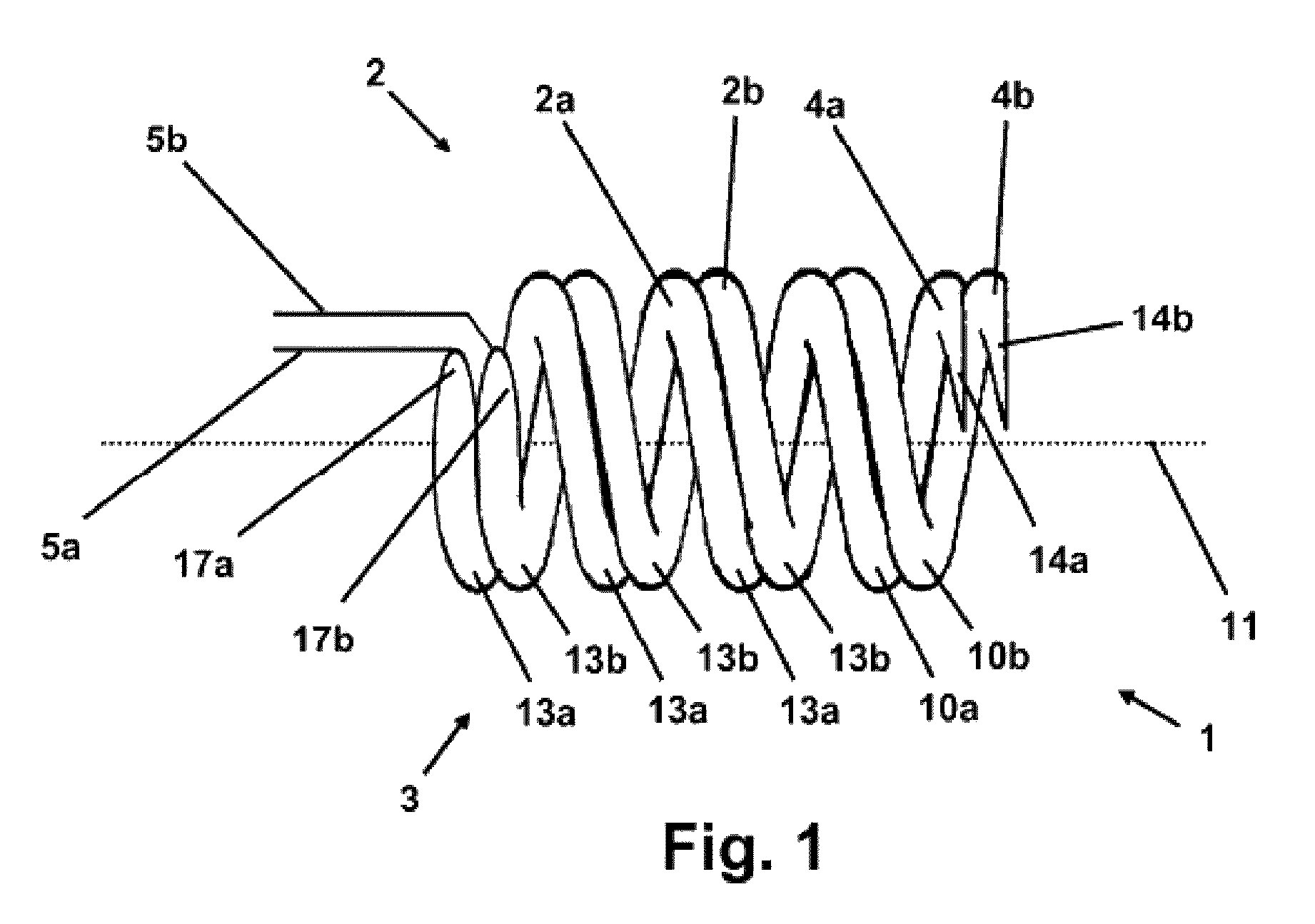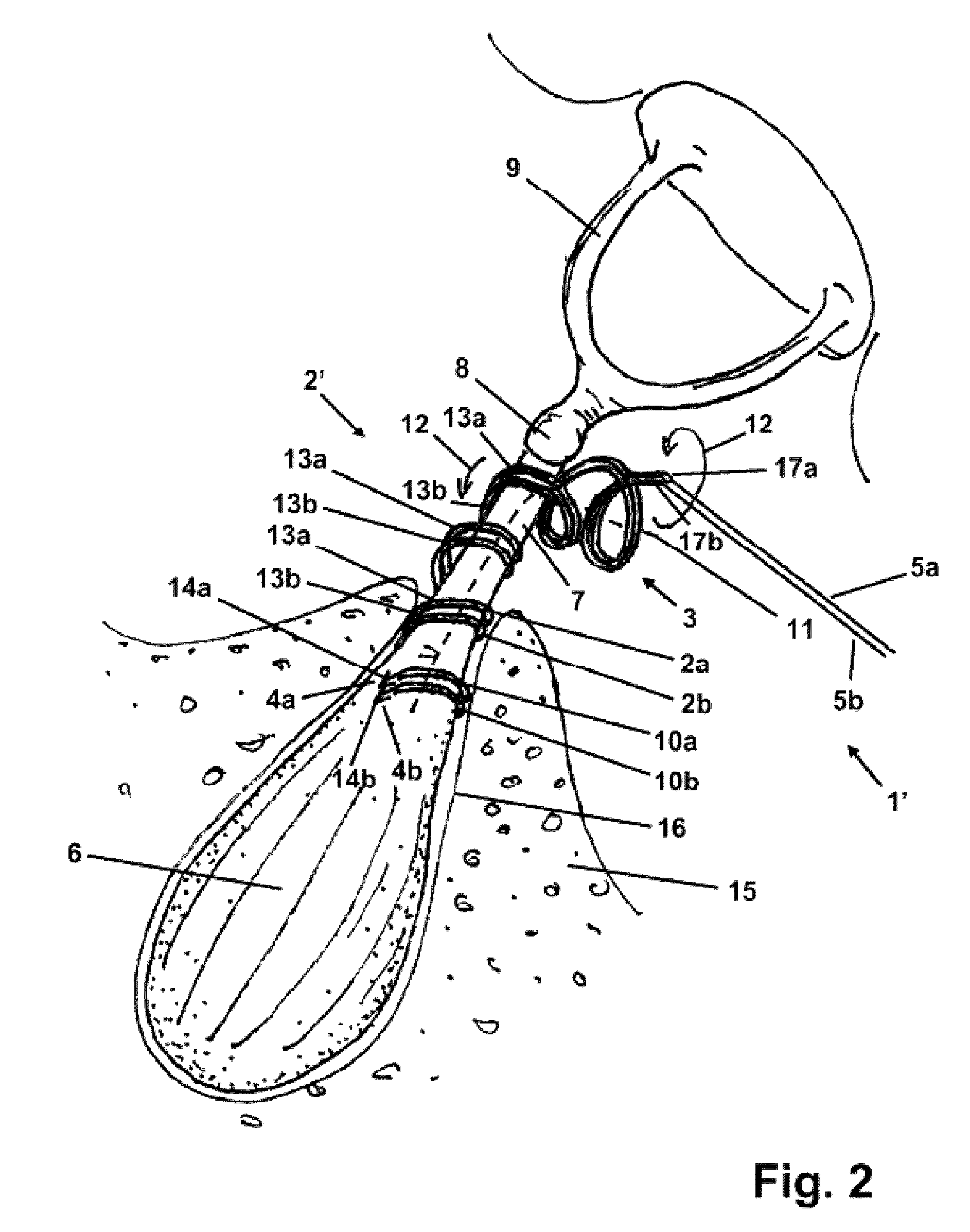Stapedius muscle electrode
a technology of stapedius muscle and electrode, which is applied in the field of stapedius muscle electrode, can solve the problems of damage to the inner ear, the form of deafness cannot be overcome by conventional hearing aids, and the inability to amplify the sound waves received by the ear, and achieve the effect of reliable fixation
- Summary
- Abstract
- Description
- Claims
- Application Information
AI Technical Summary
Benefits of technology
Problems solved by technology
Method used
Image
Examples
Embodiment Construction
[0046]The stapedius muscle electrode configuration 1 shown in FIG. 1 contains a bipolar electrode 2, which has a first flexible elastic wire 2a made of an electrically conductive and biocompatible material and a second flexible elastic wire 2b made of an electrically conductive and biocompatible material. Each of the two wires 2a, 2b is pre-shaped as coiled along its entire length, and the two wires 2a, 2b have an identical shape and identical dimensions. They are interleaved in one another in such a way that they circle a shared center line 11 and enclose a shared volume, and run offset a fraction of one turn length from one another along the center line 11, so that together they form a double helix. The wire 2b is fastened along its entire length to the right side of the wire 2a in FIG. 1, the two wires 2a, 2b being electrically insulated from one another by insulation (not shown). The fastening of the two wires 2a, 2b to one another is preferably caused by a suitable insulating m...
PUM
 Login to View More
Login to View More Abstract
Description
Claims
Application Information
 Login to View More
Login to View More - R&D Engineer
- R&D Manager
- IP Professional
- Industry Leading Data Capabilities
- Powerful AI technology
- Patent DNA Extraction
Browse by: Latest US Patents, China's latest patents, Technical Efficacy Thesaurus, Application Domain, Technology Topic, Popular Technical Reports.
© 2024 PatSnap. All rights reserved.Legal|Privacy policy|Modern Slavery Act Transparency Statement|Sitemap|About US| Contact US: help@patsnap.com










